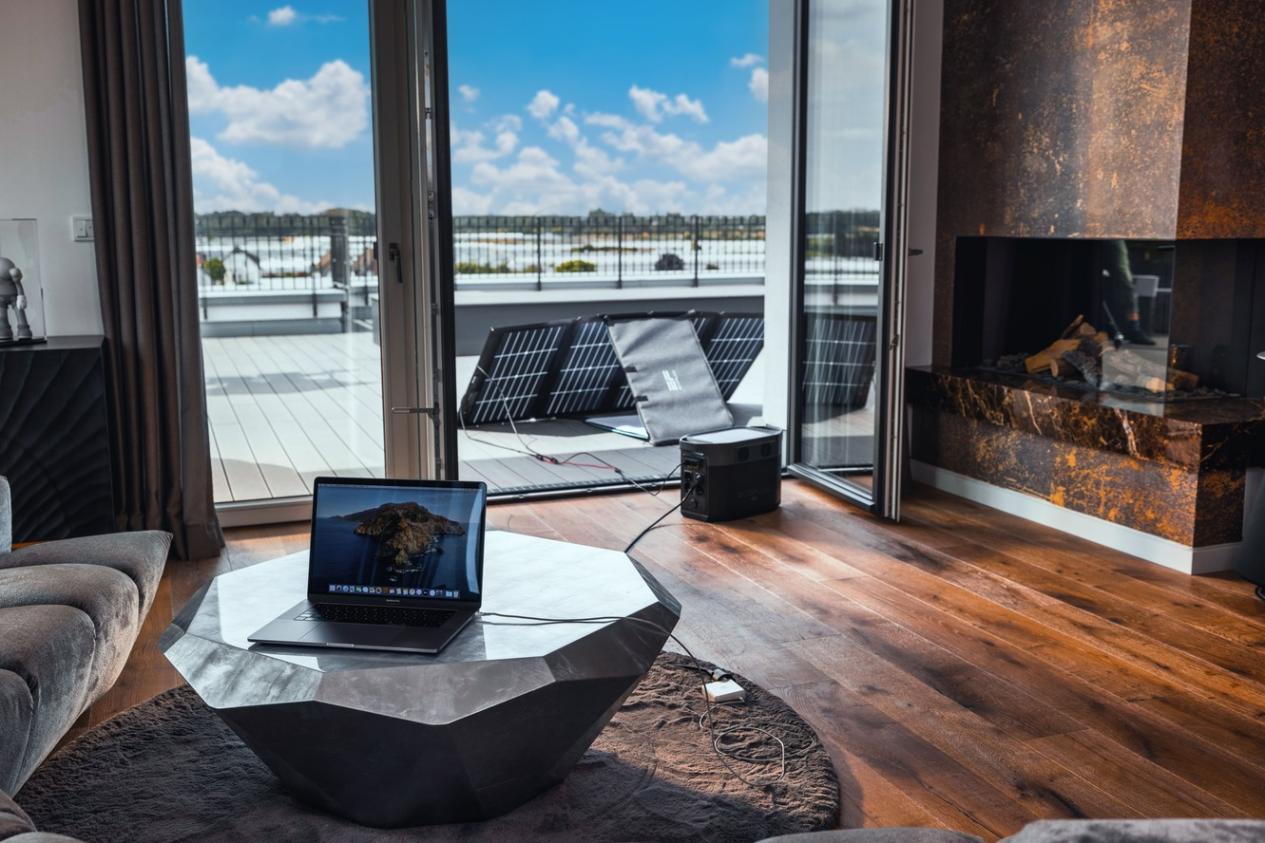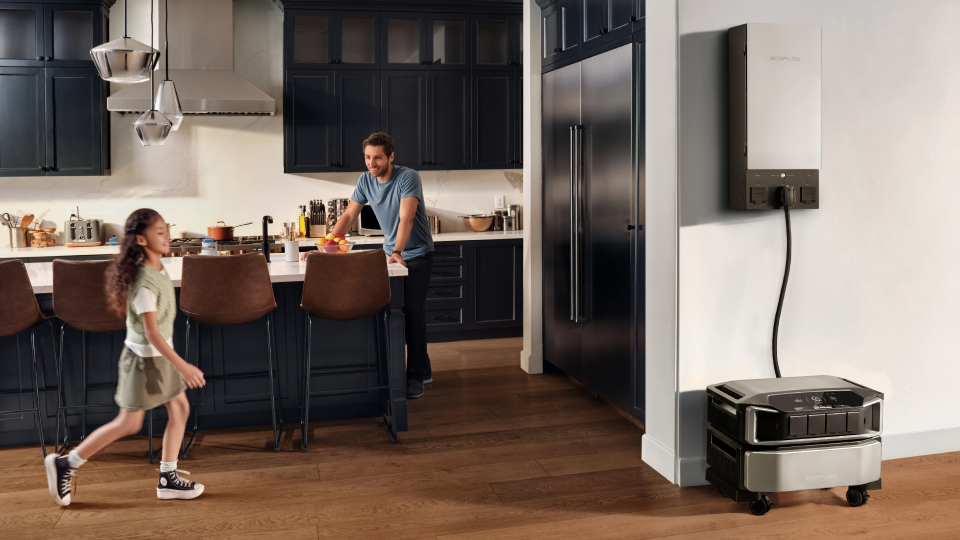What's the Cheapest Time to Use Electricity?
- Four Common Electricity Rate Plans
- What's the Cheapest Time to Use Electricity? It Depends on Your Location and the Season
- Practical Strategies for Lowering Your Bill
- Advanced Strategies: Solar Panels, Battery Storage, and Future Tech
- Take Control of Your Energy Bill!
- FAQs About the Cheapest Time to Use Electricity
The time of day you use electricity can have a bigger impact on your monthly bill than you might realize. Generally, power is cheapest late at night and in the early morning when overall demand is low. This isn't a universal rule, however.
The real key to saving money is knowing the details of your specific electricity plan, because some rate structures don't offer lower prices for using power at different times. It all comes down to supply and demand; when demand is high, electricity costs more. By shifting when you run major appliances to low-demand hours, you can cut your costs and help reduce strain on the power grid.
Four Common Electricity Rate Plans
To lower your electricity bill, you first need to know how your utility provider calculates it. Most residential customers are on one of the following four plans. Identifying which one applies to you is the most important step in managing your energy costs.
1. Time-of-Use (TOU) Plans: Price Varies by Time of Day
On a TOU plan, the amount you pay for electricity changes based on the time of day. The goal is to encourage you to use less power when demand on the grid is high. The day is typically broken into pricing periods:
- On-Peak: The most expensive time to use electricity. This is usually on weekday afternoons and evenings (e.g., 4 PM to 9 PM) when most people are home and using power.
- Off-Peak: The cheapest time to use electricity. This period almost always includes late-night hours (e.g., 10 PM to 6 AM), weekends, and major holidays.
- Mid-Peak: A moderately priced period that falls between on-peak and off-peak hours, often occurring during weekday mornings and afternoons.
2. Tiered Rate Plans: The More You Use, the Higher the Rate
With a tiered plan, the price you pay depends on how much electricity you use during a billing cycle, not the time of day. Your utility sets a monthly allowance of electricity at its lowest rate (Tier 1). If you use more than that allowance, you move into a more expensive pricing tier (Tier 2), and so on. Under this plan, the only way to save money is to use less energy overall. Running your appliances at night won't change your bill.
3. Flat-Rate Plans: The Same Price, 24/7
This is the most straightforward plan. You pay the same price per kilowatt-hour (kWh) no matter when or how much electricity you use. While this makes your bill predictable, it offers no financial reward for shifting your energy use to different times. The best way to lower your bill is simply to conserve energy.
4. Dynamic Pricing: Rates That Change Minute-by-Minute
This is the least common plan for homes and carries the most risk and reward. The price of electricity changes constantly—sometimes every few minutes—based on real-time conditions in the energy market. If you can monitor prices and use power when it's cheapest, you can save a lot. However, you are also vulnerable to sudden price spikes during grid emergencies, like a heatwave.
What's the Cheapest Time to Use Electricity? It Depends on Your Location and the Season
While the "late-night is cheap" advice is a good starting point for those on Time-of-Use (TOU) plans, your specific cheapest hours can change based on your region's power sources and the time of year.
For Most Standard Grids: Late Night and Weekends are Cheapest
For the majority of TOU plan customers, the cheapest time to use electricity is when overall demand is lowest. This consistently occurs during the deep overnight hours, typically between 11 PM and 5 AM, as most businesses are closed and people are asleep. Weekends and major holidays are also almost always considered entirely off-peak, providing a great opportunity to run large appliances without paying premium prices.
In Regions with Abundant Solar Power: Midday Can Be the Cheapest
In areas with a lot of solar energy, like California and Arizona, the pattern changes. On sunny days, a massive amount of low-cost solar power flows into the grid, often creating a surplus in the late morning and early afternoon (e.g., 10 AM to 2 PM). This can make midday the cheapest time to use power.
However, this creates a sharp spike in prices in the evening. When the sun sets and solar power disappears, demand stays high as people are home for the evening. This makes the post-sunset period, from about 4 PM to 9 PM, even more expensive than in other regions.
How Seasons Affect Peak Demand Times
Energy needs change with the weather, shifting to the most expensive on-peak hours.
- Summer: Peak demand is driven by air conditioning, which works hardest in the hot late afternoons. This makes the hours from roughly 3 PM to 8 PM the most expensive time to use power.
- Winter: Cold climates often have two daily peaks. The first is in the morning when people wake up and turn on the lights and heating. The second occurs in the early evening as people return home and do the same.
There is no single answer that applies to everyone. Your true cheapest hours are determined by your local power grid and the current season, which makes checking your specific plan essential.


Practical Strategies for Lowering Your Bill
Knowing your cheapest hours is the first step, but savings only come from action. Here is a straightforward process to put that knowledge into practice.
Step 1: Confirm Your Exact Rate Plan
First, you must be certain about your specific on-peak and off-peak hours. This information is usually printed directly on your monthly bill, and an even more detailed breakdown can often be found by logging into your utility provider's website. If you can't find the details in either of those places, a quick call to customer service is a reliable way to get a clear explanation.
Step 2: Reschedule High-Energy Tasks
Next, make a habit of running your most power-hungry appliances during your confirmed off-peak hours. This includes common chores like programming your dishwasher and clothes dryer to run overnight. The strategy is especially important for major energy users, like electric vehicles, which should be scheduled to charge only when power is cheapest. The same logic applies to other equipment, such as water heaters and pool pumps, which can be managed with a simple timer to operate during low-cost periods.
Step 3: Use Smart Technology for Automation
Finally, you can make these adjustments effortlessly by using smart home technology. A smart thermostat, for example, can automatically pre-cool your home in the summer or preheat it in the winter during cheaper hours, so it uses less energy during the expensive on-peak period. Similarly, you can use smart plugs or the built-in scheduling features of modern appliances to ensure they run automatically when the price of electricity is lowest.
Advanced Strategies: Solar Panels, Battery Storage, and Future Tech
For those willing to invest in hardware, there are more powerful ways to take control of your energy costs that go beyond simple scheduling.
Solar Panels: Generating Your Own Power
Installing solar panels in your home is a direct way to lower your electricity bills. During daylight hours, the panels generate free, clean electricity for your home to use immediately. This significantly reduces the amount of power you need to buy from the utility, especially during sunny afternoons when energy rates can be high.
Battery Storage: Saving Cheap Energy for Later
This is where the real savings strategy comes into play. By pairing solar panels with a battery, or even by using a standalone battery system, you can store energy when it's cheap and use it when it's expensive. This includes large home battery systems (like a Tesla Powerwall) or even smaller portable power stations. The strategy is simple:
Charge the battery with cheap power. This can be excess energy from your solar panels during the day, or it can be power drawn from the grid during the cheapest off-peak hours at night.
Use stored power during peak hours. Instead of paying high prices for utility during the expensive late afternoon and evening peaks, you power your home using the cheap energy you saved in your battery.
The Future: Vehicle-to-Grid (V2G) Technology
Looking ahead, an emerging technology called Vehicle-to-Grid, or V2G, aims to turn electric vehicles into mobile power sources. In the future, your EV might not only draw power from the grid to charge but also have the ability to send power from its battery back to the grid. This would allow you to sell your stored energy to utility during times of high demand, potentially earning you money and helping to stabilize the power grid.


Take Control of Your Energy Bill!
Reducing your electricity costs is a three-part process. First, investigate your utility bill and online portal to determine your exact rate plan and identify your specific peak and off-peak hours. Second, strategize by identifying the most energy-intensive appliances and activities in your daily routine. Finally, implement your plan by rescheduling those tasks and using smart technology to automate your usage. By taking these deliberate steps, you can secure significant savings and contribute to a more stable and efficient energy grid for everyone.
FAQs About the Cheapest Time to Use Electricity
Q1: How do I find out my exact peak and off-peak hours?
A: The simplest method is to directly call your electric company. You probably will find this on your monthly bill or when you log in to your account online at your utility company's website. If you don't see this, a call to customer service will provide you with the proper schedule for your plan.
Q2: Will running my dishwasher at night save money if I have a flat-rate or tiered plan?
A: No. If you are on a tiered or flat-rate plan, the time of day you use electricity won't impact your rate. Under these plans, you're charged one fixed price (flat-rate) or the price is based on how much energy you use in a month (tiered). The only way to save is to use less energy overall.
Q3: What are the most important appliances to run during off-peak hours?
A: Take note of your most power-hungry devices. Those that use the most power have heating elements or big motors. Attempt to reschedule your electric vehicle charger, clothes dryer, dishwasher, and electric water heater. Moving just these few appliances when electricity is cheaper can have an impact on your bill.
Q4: Are weekends and holidays always considered off-peak?
A: For most Time-of-Use plans, weekends and federal holidays are actually completely off-peak. However, this is not a hard-and-fast rule and will vary by provider. It is always a good idea to review the specifics of your own plan to be completely certain which days are off-peak.
Q5: Is investing in a home battery worth it just to avoid peak prices?
A: It could be, but it will hinge on your situation. A home battery is quite costly. You can achieve savings based on the variation between your utility's high and low rates for electricity—the larger the rate variation, the sooner the battery will pay for itself. For most people, the highest savings are realized when a battery is combined with solar panels.